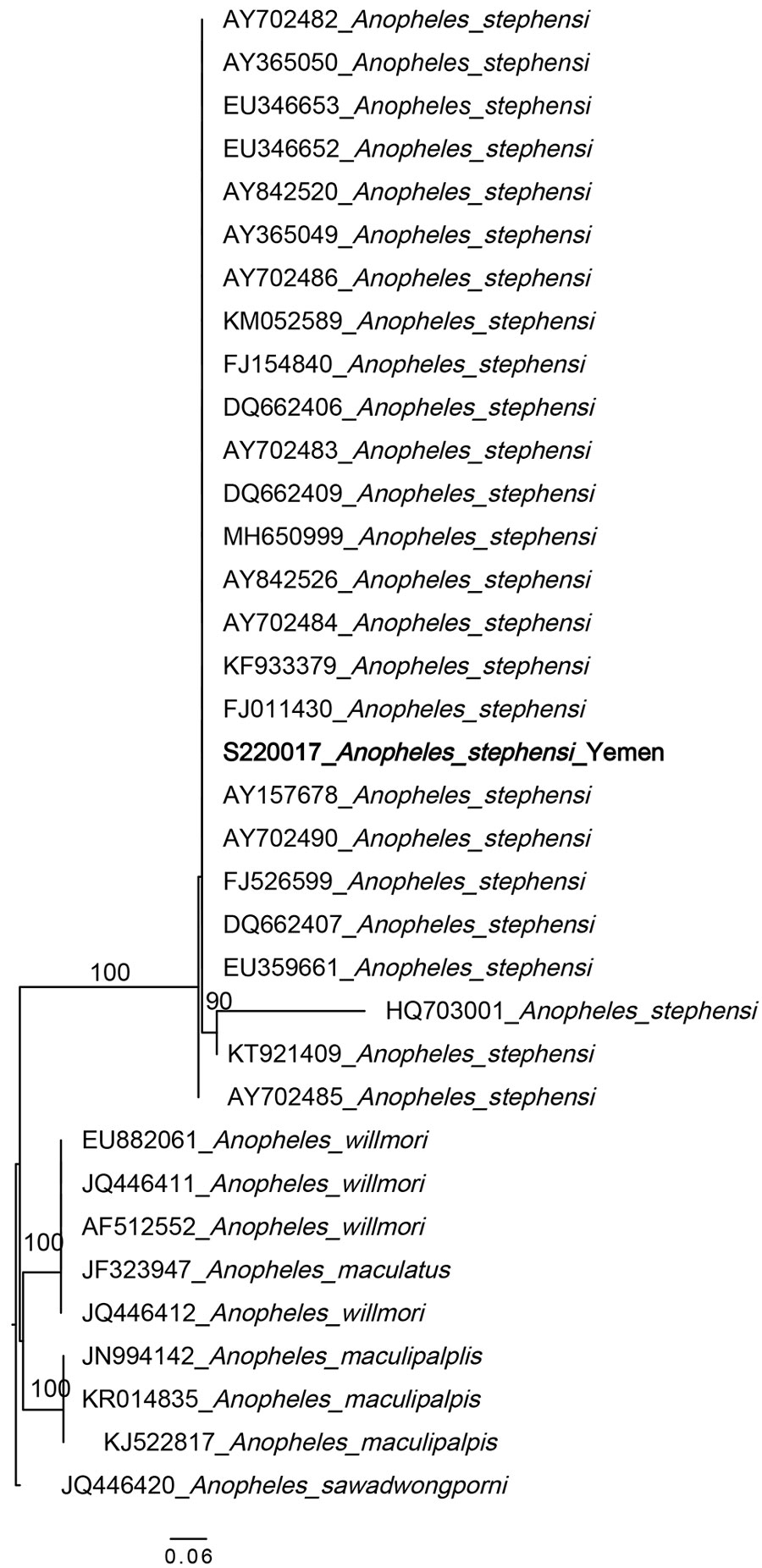Volume 30, Number 7—July 2024
Dispatch
Molecular Confirmation of Anopheles stephensi Mosquitoes in the Al Hudaydah Governorate, Yemen, 2021 and 2022
Figure 3

Figure 3. Maximum-likelihood phylogenetic analysis of An. internal transcribed spacer 2 DNA sequences for Anopheles stephensi mosquitoes collected in Yemen. Only 1 sequence (bold) is included as a representative of the single haplotype observed in the Yemen An. stephensi specimens. GenBank accession numbers are provided. Numbers along branches indicate bootstrap values. Only values >70 are shown. Scale bar indicates the number of nucleotide substitutions per site.
Page created: June 13, 2024
Page updated: June 22, 2024
Page reviewed: June 22, 2024
The conclusions, findings, and opinions expressed by authors contributing to this journal do not necessarily reflect the official position of the U.S. Department of Health and Human Services, the Public Health Service, the Centers for Disease Control and Prevention, or the authors' affiliated institutions. Use of trade names is for identification only and does not imply endorsement by any of the groups named above.